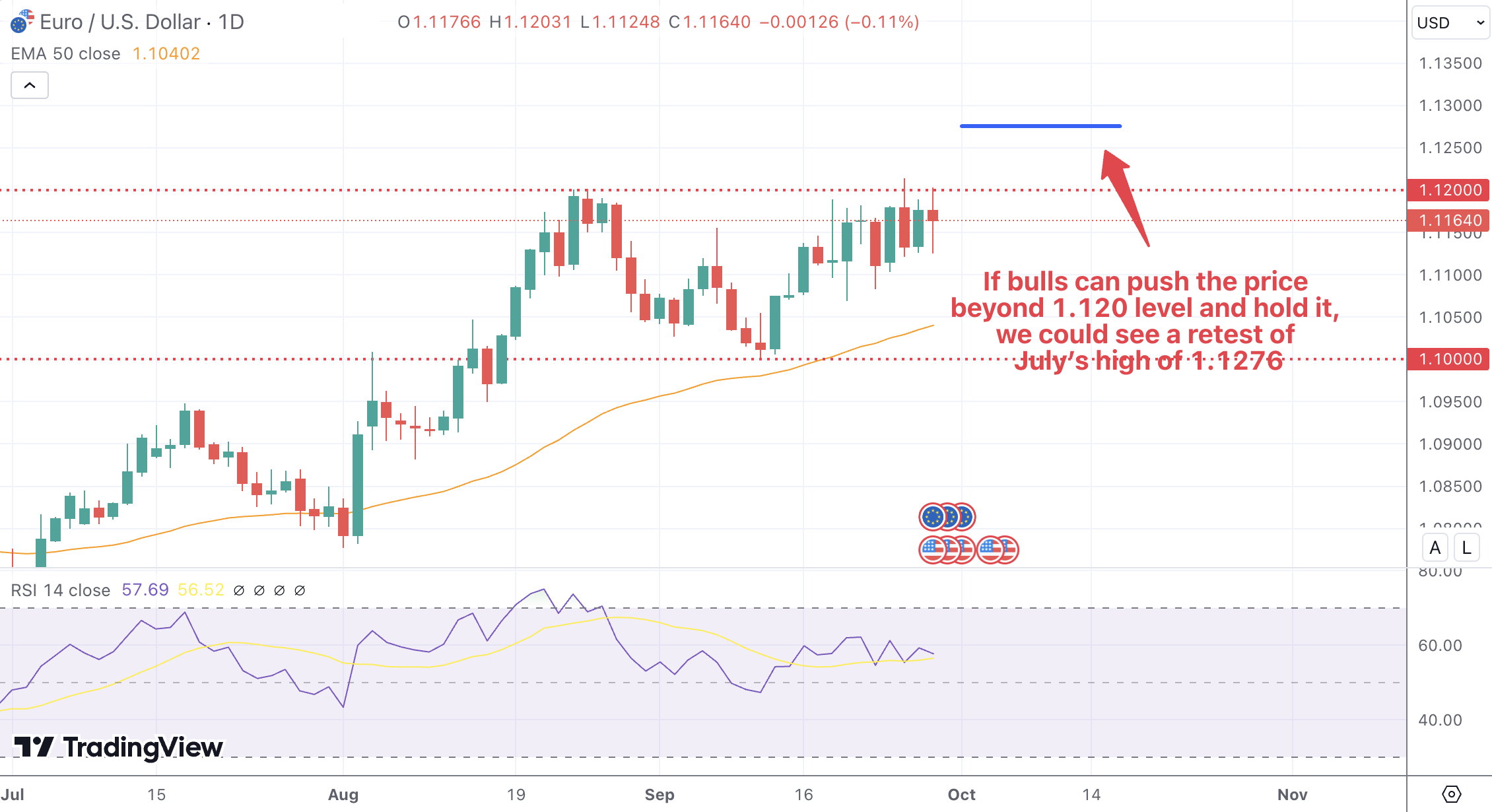Key Takeaways
- EUR/USD is currently trading near 1.1163, facing resistance at the 1.1200 level.
- Key U.S. economic data, particularly the non-farm payrolls report, will likely drive volatility in the pair this week.
- Eurozone inflation data could also play a crucial role in determining short-term price action.
- A break above 1.1200 would set the stage for a potential move towards 1.1276, while a retracement could see the pair fall to 1.1000.
Market Dynamics and Recent Performance
The EUR/USD pair continues to display heightened volatility as we head into the final days of September and the beginning of October. The exchange rate is currently hovering around 1.1163, having faced strong resistance near the 1.1200 level. Despite this, the pair remains in a bullish overall trend as traders gear up for several critical economic data releases later this week. While the Euro has struggled with weakened Eurozone data, particularly in the PMI sector, the U.S. dollar has held its ground, supported by resilient economic indicators such as lower-than-expected unemployment claims and moderate inflation increases.
This recent price action has created a delicate balancing act, with both currencies responding to mixed economic signals. The Euro, on one hand, has been pressured by slowing business activity in the Eurozone, while the U.S. dollar has enjoyed relative stability due to strong labor market data and inflation figures that could potentially limit further Federal Reserve interest rate hikes.
Technical and Fundamental Influences
From a technical standpoint, the EUR/USD pair faces significant resistance at the 1.1200 mark. If bulls can push the price beyond this level and hold it, we could see a retest of July’s high of 1.1276. The RSI indicator on the four-hour chart suggests that bullish momentum is fading, with the market entering a period of stagnation just below key resistance levels. Should this momentum continue to weaken, a retracement towards the 1.1000 region could become likely, testing the strength of the overall bullish trend.
On the fundamental side, key U.S. economic reports will dominate the week. The non-farm payrolls (NFP) report on Friday is expected to be a pivotal event, with forecasts suggesting 144,000 jobs added in September. Additionally, speeches from Federal Reserve Chair Jerome Powell and other central bank leaders could further clarify monetary policy directions. In the Eurozone, inflation data due early in the week will also shape market sentiment, with traders keenly watching for any signs of price pressures easing.
Looking Forward
Looking ahead, the focus will remain on how these economic data points influence central bank policy. The Federal Reserve’s recent rate cuts have already sparked speculation about the possibility of more cuts, particularly if the labor market begins to show signs of slowing. On the other side, the European Central Bank (ECB) is navigating the fine line between controlling inflation and supporting a sluggish economy. Should Eurozone inflation surprise to the upside, this could bolster the Euro in the short term, but weak economic growth will continue to cap gains.
The technical setup suggests that the EUR/USD pair is at a crossroads. A sustained break above 1.1200 would open the door for further gains, while a failure to clear this resistance could push the pair back towards 1.1000. All eyes will be on the major data releases this week to determine the next directional move for the pair.


